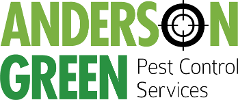Our Green Methods

We strive to maintain and improve the environment. As s pest control company that means targeting pest while doing no harm or improving the lot of beneficial species. A tall order.
Some people believe heat treatments represent a green technology that uses no chemicals to control bedbugs. But the number of insect species living in an average house is near 100. So we wipe out 99 or so insect types to destroy one target. Not so green. And also in the 99 are species of spiders that eat bedbugs. So if soon after treatment bedbugs move back from an adjacent unit, it may have the run of the place undeterred by predators possibly making a real infestation more likely.
In another example, the financial impact cause by an ongoing termite infestation requires us to to take immediate action. But the insecticides used to end an infestation often kill pollinators such as bees when bees interact with flowers that have absorbed the insecticide. This action is inherently ungreen.
This is a conundrum. We need to eliminate pests and protect property. So how does this effect out green methods. Well for one we always need to apply just what is needed. Any less will result in an ineffective treatment and require re-treatment which results in more pesticide released into the environment. Any more through over application and again extra pesticide released.
So can pest control be green? This is where Integrated Pest Management comes in. It helps us to look at a location as an ecosystem and to look at problems in terms of multiple unit environments. We seek to know not just that bed bugs are in the house but where and how many. This helps us to make more informed choices resulting in better results making fewer mistakes. It also allows for thresholds to be established so that treatments occur when a problem is identified as opposed to reacting to any sighting.
The other consideration is what you as consumers will except in terms of costs. If a less green but still acceptable treatment exists and it is cheaper it is likely to be the way things will be done. So we work to prevent problems because that is often the greenest approach. Move the woodpile away from the house. Find places with excess moisture. Protect vents and outdoor access areas. Move debris away away to form a perimeter. Use natural dusts to secure the house. These are green steps that will save you money.





